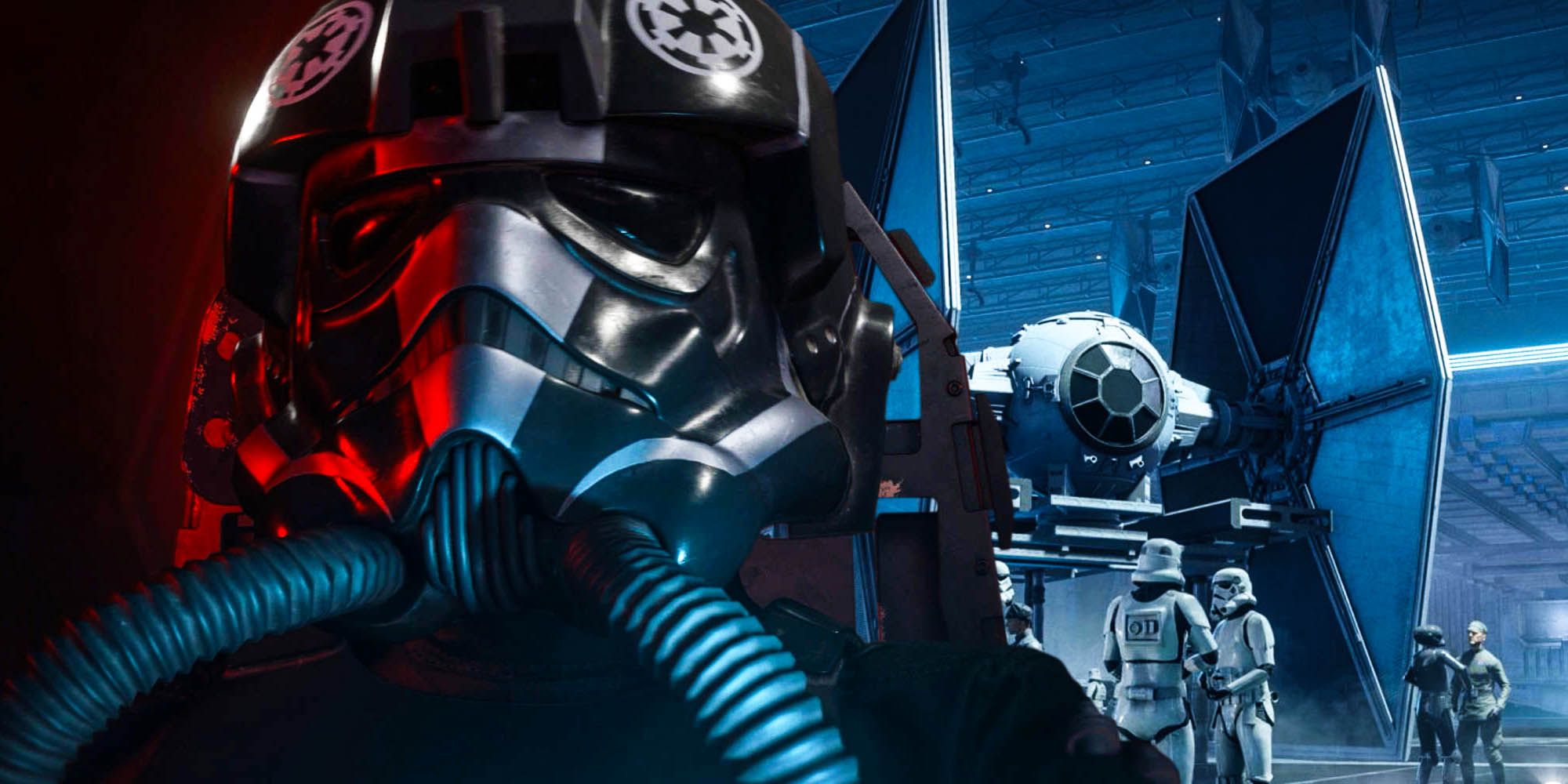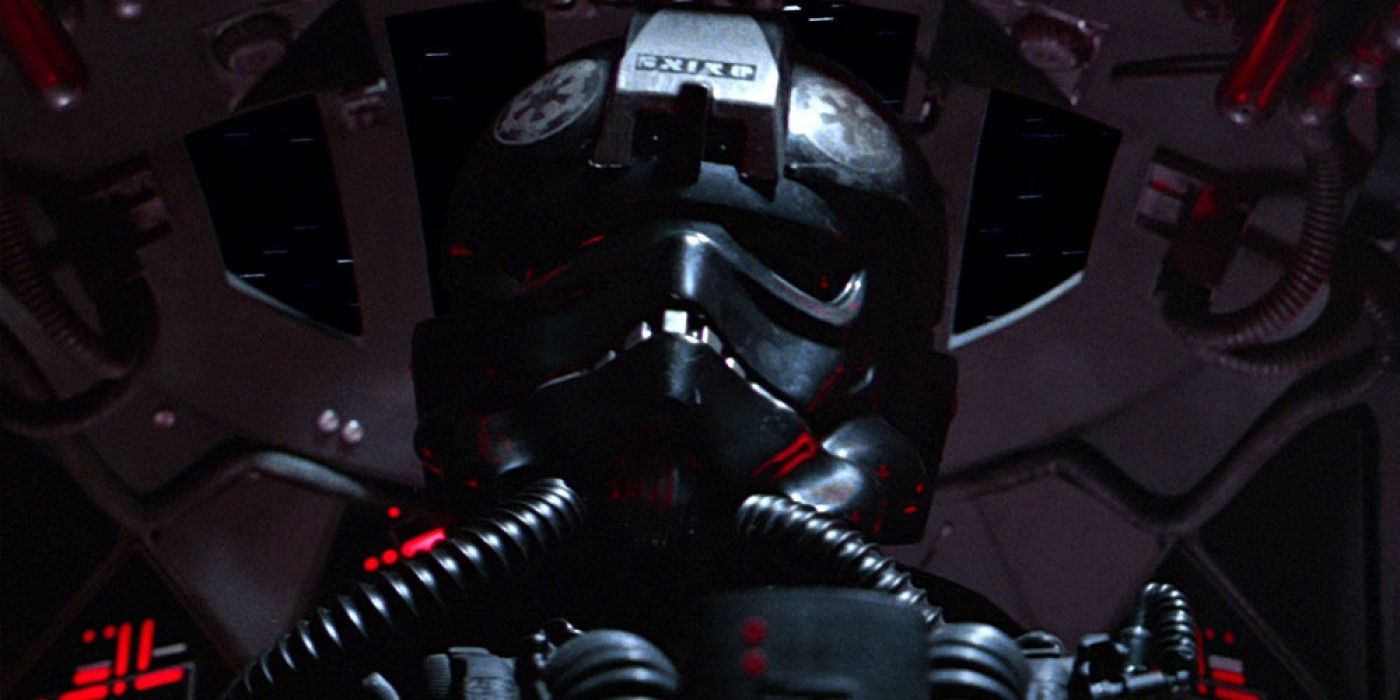
The Star Wars franchise’s TIE Fighter pilots are highly trained and competent military units, but most TIE Fighters lack deflector shielding, so how do they survive? First appearing in A New Hope, TIE Fighters were the Empire’s standard, all-purpose starfighters. They quickly became one of the Star Wars franchise’s most recognizable ships, pursuing Han Solo’s Millennium Falcon and engaging Rebel X-Wings in space combat throughout the original trilogy. The Empire Strikes Back introduced the TIE Bomber, which employed heavy ordnance against Rebel targets. Return of the Jedi then featured the newer TIE Interceptors, a deadly TIE variant whose specialty is ship-to-ship combat. Each of these ships lacks shielding, yet they pose a significant threat to the Rebels.
The standard Imperial TIE Fighter was designed to be cheap, simple, and easy to mass-produce, quickly becoming the backbone of the Imperial Starfighter Corps. TIE Fighters were swift and highly maneuverable but lacked a hyperdrive, requiring larger transports, such as Star Destroyers, to bring them from system to system. They also lacked shielding, making them extremely vulnerable to enemy blaster fire. TIE Fighters also lacked torpedo tubes (though some models had them attached for specific missions), making their only armament a pair of powerful blaster canons.
TIE Fighter pilots were some of the Empire’s most highly trained military units. As revealed in the Star Wars Trilogy Sourcebook, Special Edition, only ten percent were qualified for flying TIE Fighters of all the enlistees to the Starfighter Corps. The rest found other positions within the Empire's Navy, such as engineers or gunners. The training was so intense that TIE Pilots were often emotionally unhealthy and struggled with their off-duty lives, as revealed in X-Wing: Iron Fist. Considering how rigorous that TIE pilot training was, it seems wasteful for the Empire to place them in ships that were so poorly protected against enemy blaster fire. But it’s precisely their training, along with the TIE Fighters’ other attributes, that made up for their lack of shielding.

Although TIE Fighters lacked deflector shields, they were faster and more maneuverable than most Rebel craft. TIE Fighters rarely survived a direct hit from Rebel starfighters, but they were notoriously difficult to target. TIE Interceptors were even faster than the standard TIE Fighters and had a smaller profile, making them even harder to hit. TIE Bombers were lethargic but rarely entered a battle without cover fire from the faster TIE Fighter designs. TIE Bombers also made up for their slower speed by including a massive arsenal of explosive ordnance, with torpedoes that could target enemy fighters at long range.
The elite TIE Pilots took advantage of these attributes and often outmaneuvered Rebel craft in dogfights. Rebel X-Wing pilots, such as Luke Skywalker and Wedge Antilles, were shown taking direct hits from TIE Fighters during the Battle of Yavin, only surviving due to their deflector shields. In many more cases, Rebel pilots were shot down with only a few volleys from the TIE Fighters’ powerful blasters.
The Empire’s military was massive, so even with only ten percent of prospective pilots passing their training, TIE Fighters flew in swarms during Star Wars original trilogy space battles. TIE Pilots made up for their unprotected craft with their sheer skill and the ships’ speed, but the Empire still displayed a breathtaking degree of hubris by putting such well-trained beings into vulnerable starfighters. For the Empire’s most important leaders, such as the Sith Lord Darth Vader, there were rare TIE variants that had both shielding and hyperdrives. For most of the Star Wars franchise’s TIE Pilots, however, it was their aptitude that allowed them to survive their ship’s lack of shielding.
from ScreenRant - Feed https://ift.tt/3v0IZKf


0 Comments